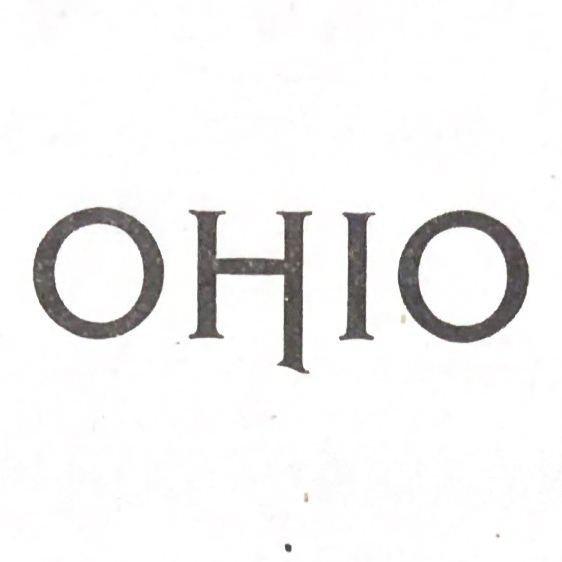
Edward Orton, LL. D., was born at Deposit, Delaware county, New York, March 9, 1829. His parents were Rev. Samuel G. Orton, D. D., and Clara Gregory Orton. The Ortons are first known in New England about 1640, the name appearing in this year in the records of Charlestown, Massachusetts.
Thomas Orton came to Windsor, Connecticut, in 1641 or 1642. From Windsor certain members of the family emigrated in the year 1700 or thereabouts to the new settlements of Litchfield, which was then on the edge of the wilderness. There were thus two branches of the family—one at Windsor and one at Litchfield. The Litchfield Ortons lived for more than a century on what was known as Orton Hill, South Farms. They were well represented in the Revolutionary war, but beyond this do not appear to have taken prominent part in public life. They seem to have been a quiet, home-loving, fairly thrifty stock, possessed of a good deal of family affection and interest.
Miles Orton, the father of the Rev. Samuel G. Orton, was a soldier in the war of 1812 and died soon after the war.
Samuel G. Orton was born at Litchfield and was brought up on a farm until 20 years old, when, under the ministry of Dr. Lyman Beecher, he was encouraged to seek a liberal education. He was obliged to support himself by his own labor both while preparing for college and during his entire course. He graduated at Hamilton College in 1822 and studied theology in New Haven. He was an honored minister in the Presbyterian Church for nearly 50 years; most of which time he spent in Western New York.
Edward Orton passed his boyhood in his father’s country home at Ripley, Chautauqua county, New York. He acquired here a knowledge of and life-long interest in country life, often working among the neighboring farmers for weeks and even months at a time. He was fitted for college mainly by his father, but spent one year in Westfield Academy and another in Fredonia Academy. He entered Hamilton College, the college where his father had graduated, as a sophomore in 1845 and graduated in 1848. He taught after graduation for a year in the academy of Erie, Penna. He entered Lane Theological Seminary, Cincinnati, in 1849, and was under Dr. Lyman Beecher’s instruction. He withdrew from the seminary on account of a temporary failure of his eyes, but after a year or two spent on the farm and in travel he resumed the work of teaching, becoming a member of the faculty of the Delaware Institute, Franklin, Delaware county, N. Y. In college his chief interest had been in literary and classical studies, but in the institute he was set to teaching the natural sciences and a latent taste for these studies was soon developed. He pursued the studies of chemistry and the natural history branches with special interest, and to prepare himself better for teaching them took a six months’ course in the Lawrence Scientific School of Harvard University, in 1852, studying under Horsford and Cooke and Gray. Finding that his theological creed was giving way under his later studies he sought to avert the change by more thorough investigation in this department, and entered Andover Seminary to attend for a year Prof. Park’s lectures on theology. The experiment was successful to the extent of arresting the change in his views, but after a few years the process was resumed and ended in the replacement of the Calvinistic creed in which he had been brought up by the shorter statements of Unitarianism. In 1856 he was called to the chair of natural science in the State Normal School of New York, at Albany. He held this position for several years, resigning it to take charge of Chester Academy, Orange county, N. Y. After spending six years in this position he was called in 1865 to Antioch College, Yellow Springs, Ohio. He was first made principal of the preparatory department, then professor of natural history, and finally in 1872 president of the institution. This last position he held but for one year, resigning it in 1873 to accept the presidency of the Ohio Agricultural and Mechanical College, now the State University, at Columbus. He was also made professor of geology in this institution at the same time. He held the presidency for eight years and retained the professorship of geology after resigning the former place.
During his residence in Yellow Springs the State geological survey was organized under Newberry. Prof. Orton became in 1869 a member of the geological corps, being appointed thereto by Governor R. B. Hayes. He was reappointed by Governor Noyes, and after Newberry’s withdrawal from the field was appointed State geologist by Governor Foster and at a still later day by Governor Hoadly. This latter position he has held in conjunction with the professorship of geology in the State University.
He was married in 1855 to Mary M. Jennings of Franklin, N. Y., who died in 1873. In 1875 he was married to Anna Davenport Torrey of Millbury, Mass.
In addition to his geological work proper Prof. Orton has taken an active interest in the applications of geology to agriculture and sanitary science and especially to the questions of water supply and sewerage of the towns of Ohio.


